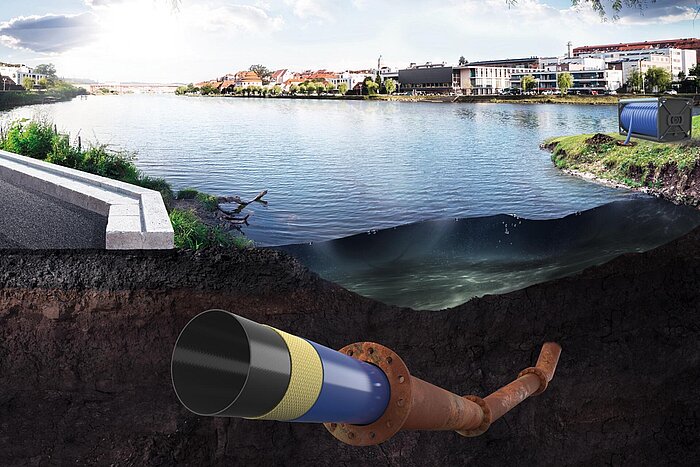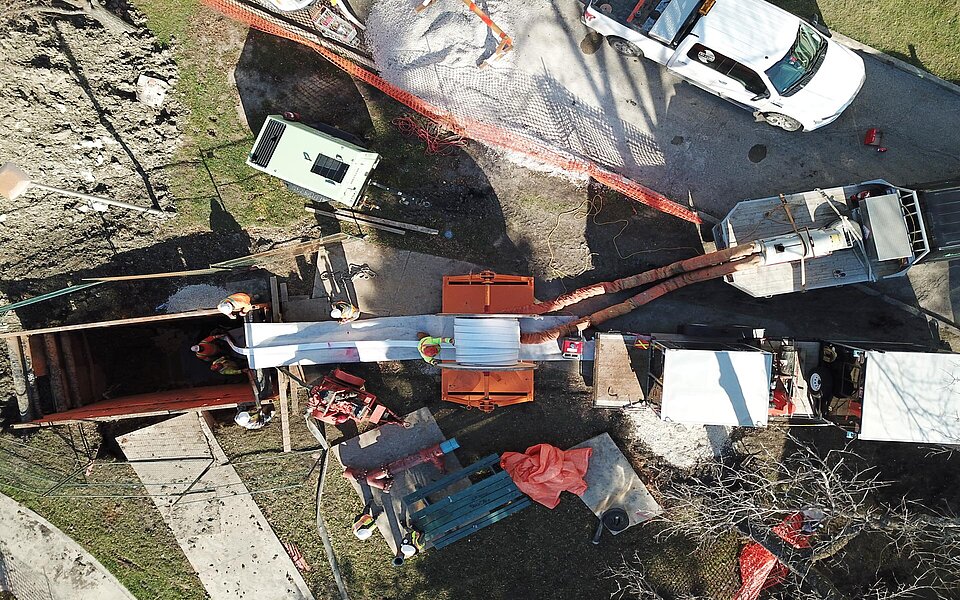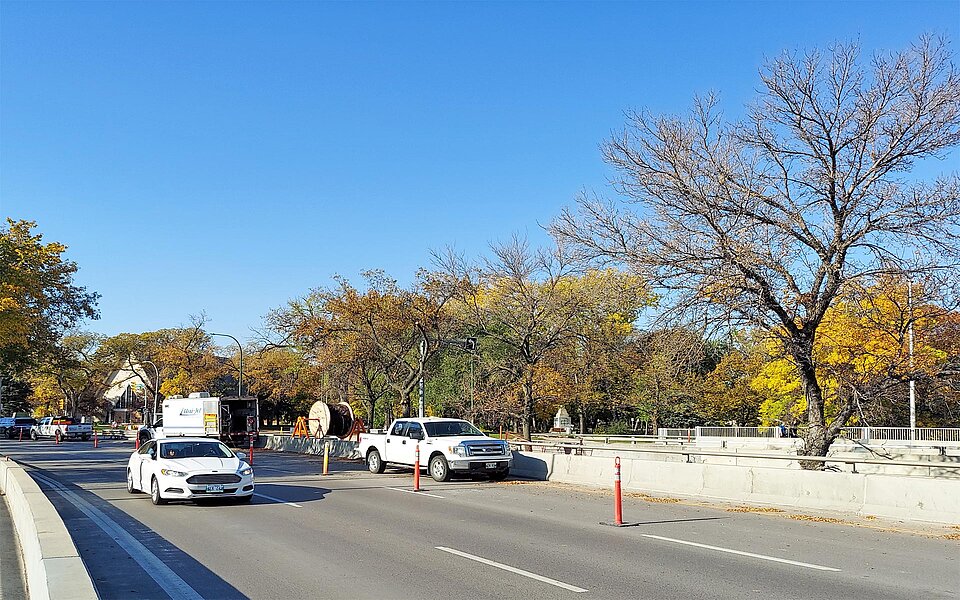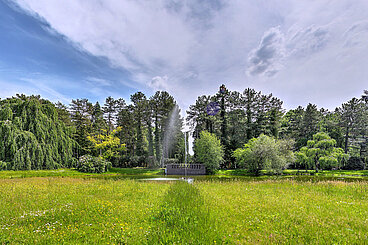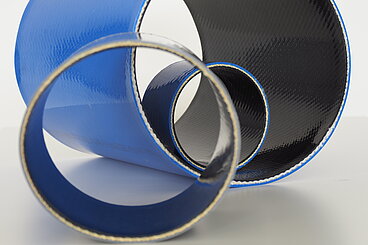Prior to the installation of the Primus Line® system DN 250, a CCTV inspection was carried out to detect deposits, incrustations or unclean weld seams. This revealed several sharp protrusions that had to be removed before the liner was pulled in with a milling robot to avoid damaging the liner during pull-in. In addition, an unrecorded 45-degree bend was found about six metres before the end of the pipeline. The actually planned low-pressure connector therefore had to be replaced by a medium-pressure connector. Subsequently, the pipeline could be cleaned and a second camera inspection could be carried out to check the preparatory measures.
To insert the liner, the transport drum with the liner pre-folded in a U-shape was placed at one of the two excavation pits. With the help of a winch, it was then pulled in at a speed of about ten metres per minute.
After the liner was brought into its round shape with the help of compressed air, the connectors could be installed on both sides. Within a day, the installation was completed and the pipeline could be put back into operation after successful pressure testing and disinfection to ensure the safety of the drinking water. The service life of the water main was thus extended by at least 50 more years.
Follow-up project already planned
After the successful and satisfactory completion of the measure for the city of Winnipeg, the next project there is already being planned and will be implemented in August this year. This time, too, it is about the rehabilitation of a siphon. A 220-metre potable water pipeline DN 600 will be rehabilitated with the Primus Line® System DN 500 (operating pressure 232 psi).
These projects are not the first river crossing measures with Primus Line® in Canada. Among others in Canmore, Alberta, a Primus Liner DN 250 was installed over a length of 193 metres in an HDPE pipeline DN 300 with two 42-degree bends. The aim of the measure was to convert the pipeline from wastewater to potable water.
New pipe-in-pipe construction for dual containment
For the construction of new siphons, Primus Line® as a pipe-in-pipe solution together with an HDPE pipe is also an interesting alternative to double steel pipes or cast steel pipes, which, due to its flexibility and pliability, also allows pipe runs with bends. First, the HDPE pipe is inserted into the ground via an HDD borehole and then the liner is pulled in. Since Primus Line® absorbs the complete internal pressure of the pipe, the HDPE pipe only serves as a protective cover and only requires a small wall thickness. Thus, the combination of HDPE pipe and Primus Line® is a cost-effective method for double safety.
The pipe-in-pipe solution was therefore used, for example, in the high-pressure gas sector or for pipelines under critical traffic infrastructure such as railway lines or highways. This solution can also offer more safety in areas with seismic activity (compared to rigid pipe solutions) or in particularly sensitive environments such as water protection areas (e.g. at crossings of sewage pipes).
More about river crossings

